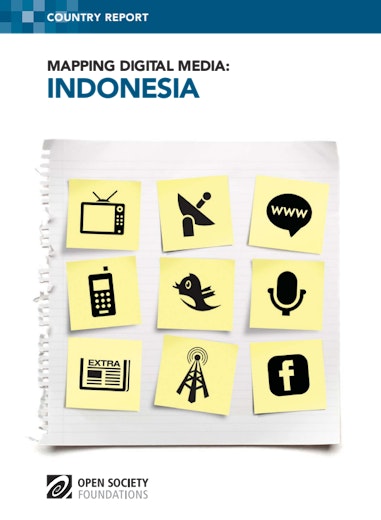The Mapping Digital Media project examines the global opportunities and risks created by the transition from traditional to digital media. Covering 60 countries, the project examines how these changes affect the core democratic service that any media system should provide: news about political, economic, and social affairs.
The emergence of digital media in Indonesia coincided with the country’s transition to democracy beginning in 1998. In some ways, digitization has catalyzed the development of diverse and independent media.
Market reforms in favor of liberalization have gone hand in hand with convergence and proliferation to produce a radical increase in the number of media outlets. The number of national television channels has doubled since 1998; commercial radio stations have tripled; and the number of print newspapers has more than quadrupled. This has occurred alongside and in tandem with a rapidly growing online news sector populated by a mixed ecology of established brands and new entrants.
In other ways, however, digitization has merely helped to shift the locus of concentrated power from the state to an increasingly consolidated media elite. Despite the growing number of outlets, new entrants in conventional sectors have been rare and have been hampered by policies that have tended to favor commercial incumbents.
Download
-
Mapping Digital Media: Indonesia (470.95 Kb pdf file)
Download the complete 94-page report.
Read more
Voices
What Does Independent Journalism Look Like in the Digital Age?

Journalists and media organizations can find themselves repressed because of inadequate or deliberately repressive policy. Mapping Digital Media examines the situation in 56 countries.
Voices
Does Digital Media Mean Better Media?
From Montenegro to Nicaragua to China to Egypt, has digital media improved access to good-quality journalism?
Voices
Early Days for Digital Media in Morocco
Digital media in Morocco continues to advance. With 105 percent mobile phone penetration in the country and a growing appetite for online news more change is on the way.
